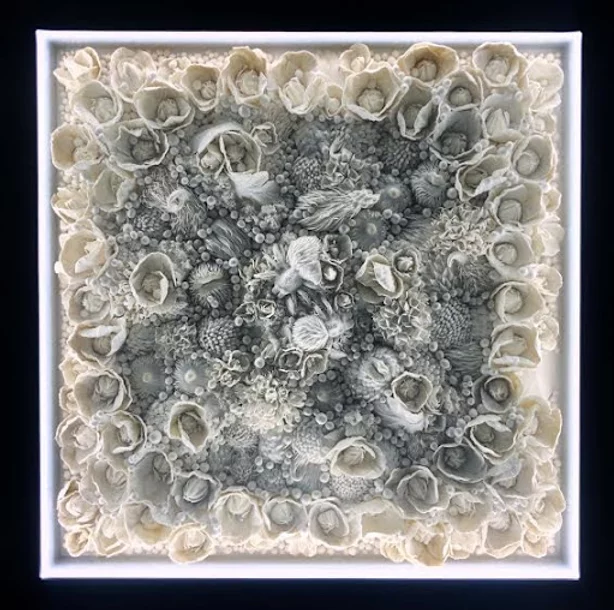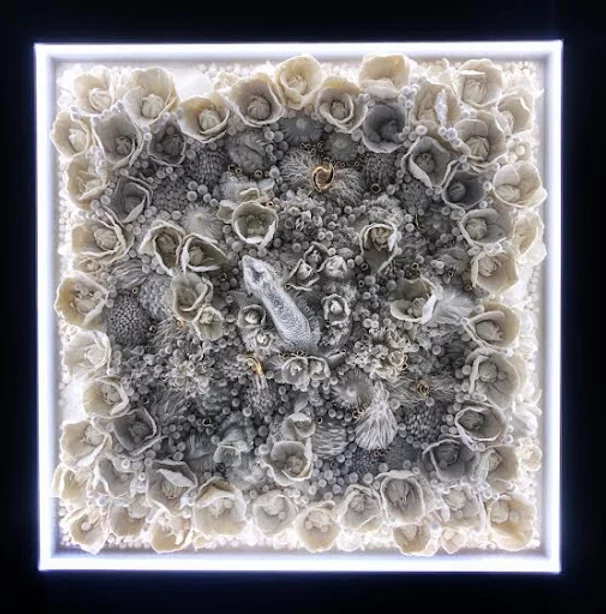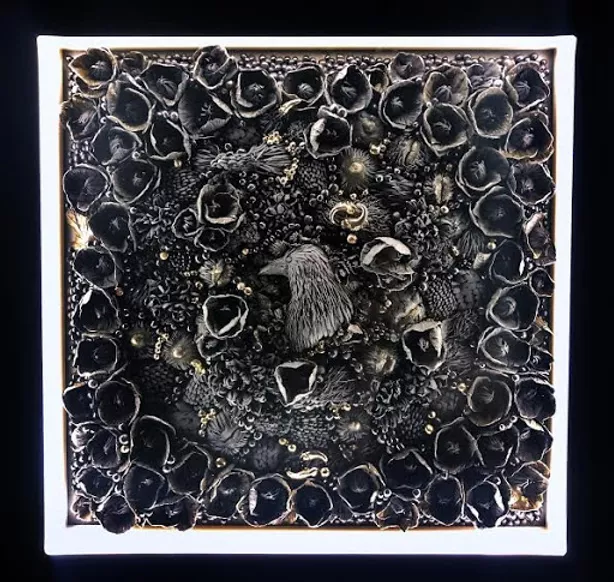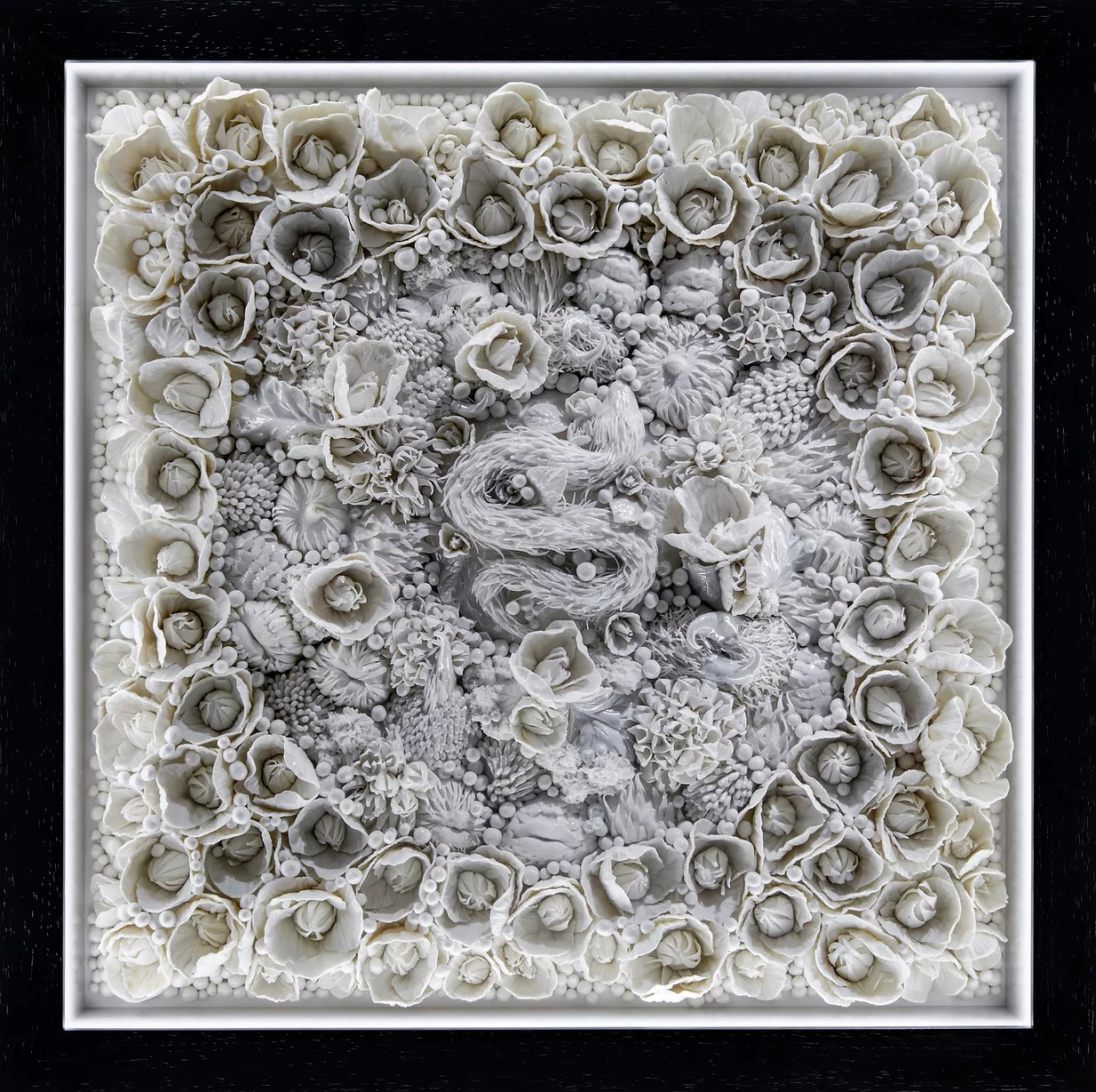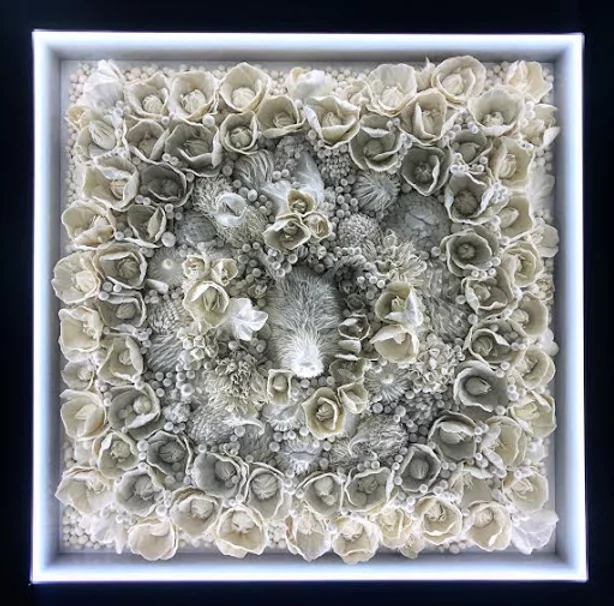Since the 18th century, when modern man raised above the earth in order to subjugate everything around him, nature and all its elements became raw-material for the industrial progress of humanity. Due to the hierarchical diversion between nature and culture, plants and animals lost their mystical and spiritual meanings and became the platform for the technological development of the Homo Faber. While he progressed, he became unbeatable, indeed, unstoppable in the evolutionary race. Though, this departure from mankind’s roots also alienated our relation with nature. It made us become the biggest threat to the world. Yes, the most dangerous enemy of mankind became mankind itself. Like a virus, we spread around the globe and like a parasite we sucked its sources nearly dry. The many post-apocalyptical movies that appear lately are not exaggerated science fiction but dark views into a possible future.
Melis Buyruk reviews our relation with nature by depicting creatures on a strange ground where pieces of plants and animals are merged with human body parts. Her ontological analysis of man’s role in the circle of life refers to various fields from philosophy to psychology and socio-politics. It underlines that instead of mechanical categorization and separation, a holistic world view is needed, and entropy must be embraced as a positive energy in the never-ending flux of life. We know that new forms of existence cause now forms of creatures. This means that we must be open to new forms of living, where empathy, collaboration and coexistence become fundamental mentors of change.
The quasi-naturalism of her porcelain works gets opposed by her collage-like approach and fragmental notion of figure. The illusionistic aesthetic, which on the first look make the works appear as realistic, opens-up links to surreal dreams and nightmares. Out of the clash of realism and surrealism appears a distortion effect that make the pieces highly attractive. At the same time, an uncanny but appealing atmosphere surrounds the works, which results from her dialectical play with representing and distorting, as well as mirroring and creating reality. As a result, the spectator permanently shifts between recognizing and misconceiving as well as knowing and not-knowing the presented elements in her sculptures. This dynamic perception process makes new understandings of our natural world possible. It means the first step towards alternative insights in the way we live with the environment around us, and could become the beginning of personal change. Buyruk’s choice of material is not only referring to the refine craft of her art but also reveals cultural references. For the aesthetically sophisticated, porcelain is of high value in homeware as well as in decorative objects. Clashing its fine and delicate character with references to flora, fauna and anthropology in order to create hybrid in-between-creatures, an alienation effect occurs, which brings the spectator to rethink his own relationship with nature.
The artist’s oeuvre relates to various formal and conceptual dimensions ranging from decoration to deconstruction, from beauty to horror, from realism to surrealism, as well as from traditional still life aesthetics to futuristic bio-fusions. The works seem to come from another planet, where man and nature are melted in hybrid forms in order to coexist. Yet, their strange existence makes us question our own ideas about the reality around us, and therefore mean a chance to reconsider our world affiliation.
In contrast to the previous series, where in a still-life set-up, plants merged with elements like lips, breasts or horns, now birds, animals, reptiles, snakes or spiders appear in the middle of the composition on the ground of hybrid creatures. The exposed figures in the center mean first of all a formal contrast, because they are depicted in a rather coherent and naturalistic way. Also, the spectator can now concentrate on one large and single element instead of the multiple parts of the ground, which previously where the single focus of attraction. The habitat of the ground, which only mattered before, is in the current series the base for the different fauna that exist on top of it. The spectator’s attention now shifts from the multilayered and complex environment to the centered protagonists.
Melis Buyruk’s latest approach renews her ontological review of her holistic understanding of nature. Besides the new trinity of plant, animal and human, the creatures refer to our oldest phobias. Spiders, snakes and reptiles have left ancient old marks on our consciousness. Like archetypes from the shadow of our existence, they often trigger fear and uncanniness. The realistic representation makes us face them and reconsider our view onto the world.
The horror that the spectator might feel gets contrasted by her choice of material. Porcelain is a delicate material of cultural exquisiteness and traditional craftsmanship. It is a carrier of beauty and grace. Though, a tarantula or a strange snake gives us a shiver. Nevertheless, it is this alienation effect that draws the spectator into the relation between astonishment and curiosity. This formal and aesthetic contrast break open layers of prejudices and false assumptions regarding human nature constructions in order to reveal purer and more positive insights in the world.
Due to pieces’ white or black monochromy, a rather graphic quality occurs, which gives the spectator the chance to carefully observe the depicted figures one by one. The visual analysis has become easier due to the compositional organization of the current sculptures. Although Buyruk currently uses more elements than before, they appear more clearly and are structured according to a relief-like structure. Whereas in previous series, the porcelain elements stood out and elevated from the ground on which they were placed, now the rather flatness of the composition makes the background appear like one unit. In this sense, it appears calmer than before, which supports the concentration on the animal in the center.
Its round format shows conceptual references to globes or world maps of the strange habitat. Formally, the circled composition of the ground also guides our eyes towards the main protagonists. Like a centrifuge, our attention gets drawn towards the center of the work, where the animal waits for us to be discovered.
In the end, also the exhibition strategy of the pieces supports the concept of the alternative habitat. By using deep frames, Buyruk creates independent spaces for the sculptures. In this sense, she protects them from our intervention. We can observe, but we cannot interfere. Integrating light into the frames gives adds formal and conceptual meaning to the work. On the one hand, the artist has solved the problem of cast shadows and glass reflections – two problems that she faced during the exhibit of some of her previous series. On the other hand, the habitat gets its own source of light, which makes it even more independent from our world. An alternative and autarchic reality appears; one, where we are only outsiders.
In Melis Buyruk’s current work, moments of surprise turn into moments of astonishment. Going back and forth between the animal and its hybrid environment, we might feel like losing control of knowing what is true. The animals look real, but they lack color and they are obviously only frozen reflections of reality. Plus, our discovering of their physical constitution makes us understand that all is artificial. The surrounding looks like a still-live from the distance; but when we approach it, we learn about its weird and hybrid being. The representative character of the initially naturalistic looking-like pieces makes the spectator at first believe in what s/he sees. Only later, after Buyruk’s fascinating reality distortion gets uncovered, so that a brilliant alienation-effect occurs, in which the works reveal an appealing surreal dimension. The moment, the spectator discovers human body parts like lips or breasts, as well as animal parts like e.g. horns, a sudden change of perception occurs. It pulls the careful observer closer to the piece in order to satisfy a new-born curiosity. The works then appear strange, multi-dimensional and mystical.
Melis Buyruk’s game of illusion and distortion functions like a window into another reality, where alternative conceptions of flora and fauna exist. It is a world, in which humans and animals live in harmony and unity. Connected and mingled with each other, they have created forms of collaboration, coexistence and real community, terms that we need to embrace now more than ever in order to ensure our human survival.
Prof. Dr. Marcus Graf
